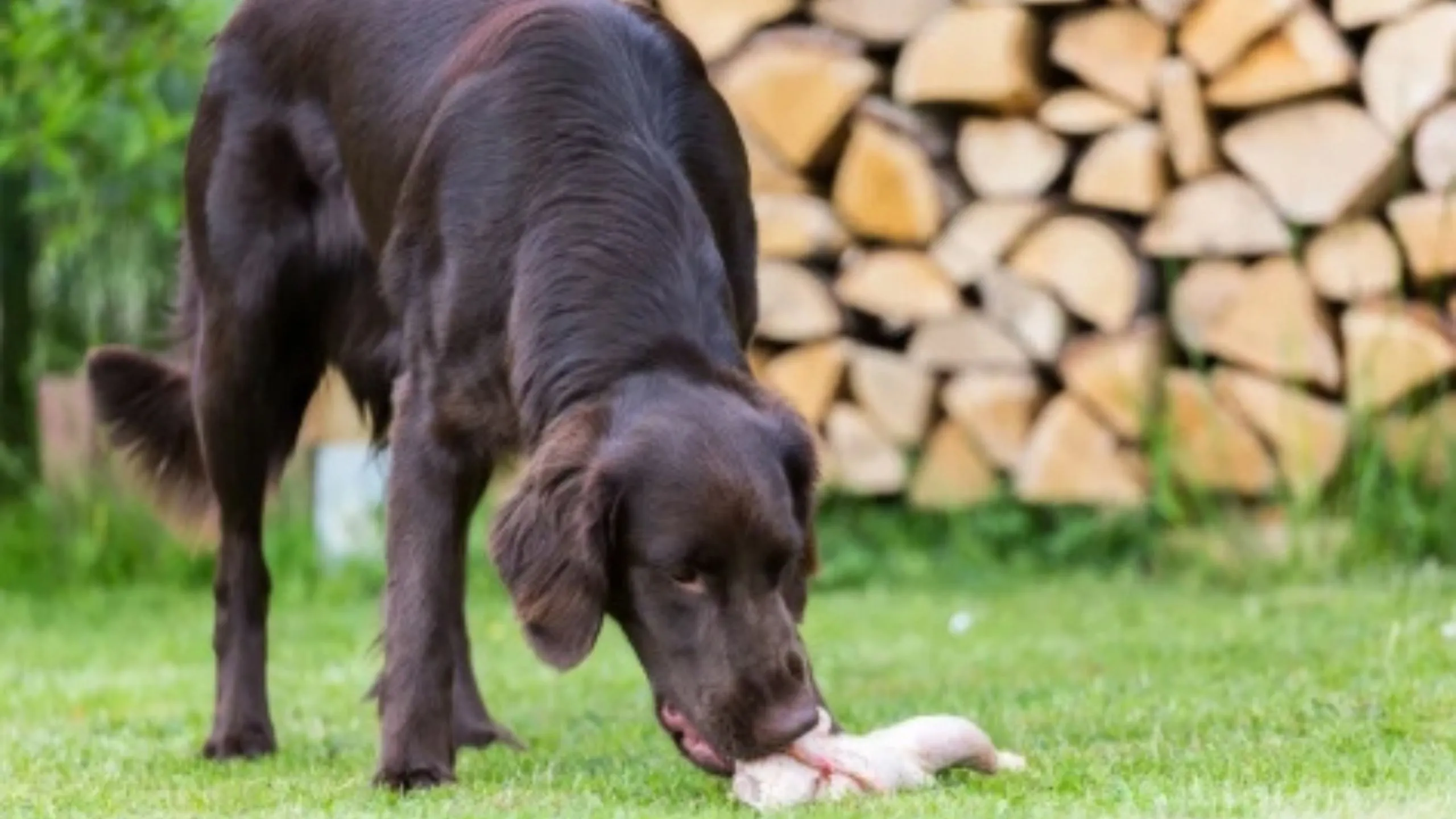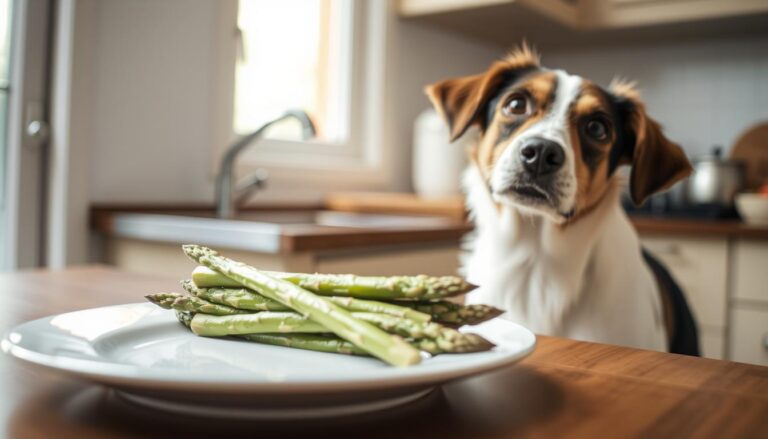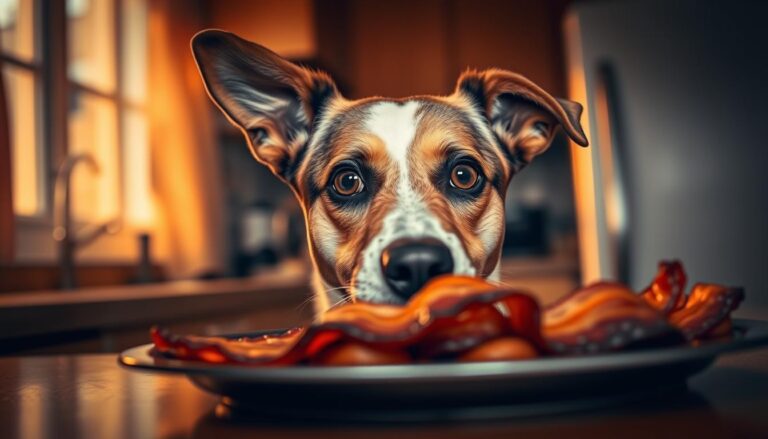Can Dogs Eat Raw Chicken Liver? Benefits and Warnings
I remember the first time I found out about raw chicken liver for my dog. It was a journey to learn what really feeds our pets.
Raw chicken liver is packed with nutrients, but it’s a topic of debate. Dog owners must weigh the benefits against the risks.
This guide will take you through the world of raw chicken liver for dogs. You’ll learn about its good points, dangers, and how to safely add it to your dog’s meals. Knowing about raw chicken liver helps you choose the best food for your pet.
If you’re new to dog care or have been doing it for years, you’ll find useful info here. We’ll cover everything from protein to vitamins in raw chicken liver.
Let’s explore canine nutrition and find out about raw chicken liver’s place in your dog’s diet.
Table of Contents
Understanding Raw Chicken Liver in Canine Nutrition
Chicken liver is a superfood for dogs, full of important nutrients. It has vitamins and minerals that can greatly improve your dog’s health. Adding it to their diet can be very beneficial.
Raw chicken liver is a nutrient-rich food for dogs. It’s great to add to their meals in small amounts.
What Makes Chicken Liver a Nutrient Powerhouse
Chicken liver is packed with nutrients that help your dog stay healthy:
- High-quality protein for muscle growth
- Rich in Vitamin A for better eyes and skin
- Full of B vitamins for energy and metabolism
- Has important minerals like iron, zinc, and copper
Essential Vitamins and Minerals in Chicken Liver
Chicken liver is a great addition to your dog’s diet. It’s full of nutrients that help with many body functions. This includes keeping the immune system strong and helping cells grow.
The Role of Organ Meats in Dog’s Diet
Organ meats like chicken liver are key for balanced nutrition. They give nutrients in a form that’s easier for dogs to use. This means your dog gets the most nutritional benefits.
“Organ meats are nature’s multivitamin for dogs” – Veterinary Nutrition Experts
Remember, when giving chicken liver to dogs, do it in small amounts. Also, make sure it’s prepared safely to keep your pet healthy.
The Health Benefits of Chicken Liver for Dogs
Feeding raw chicken liver to dogs can greatly improve their health. This organ meat is full of nutrients that help with many bodily functions. It supports overall wellness.
Raw chicken liver is rich in essential nutrients that boost your dog’s health. Veterinary nutritionists say it has many benefits. They include:
- High-quality protein for muscle maintenance
- Rich source of vitamin A for vision health
- Natural support for immune system function
- Promotes healthy skin and coat
Chicken liver is packed with vitamins and minerals important for your dog’s energy. Vitamin B12, iron, and folate help make red blood cells. They keep cells healthy.
Dogs can enjoy small amounts of raw chicken liver. Experts say it should be part of a balanced diet. But, make sure to get high-quality, fresh liver from trusted sources.
Always consult with your veterinarian before making significant changes to your dog’s diet, especially when introducing raw organ meats.
Remember, too much liver can cause vitamin A toxicity. So, it’s important to give the right amount for your dog’s health.
Can Dogs Eat Raw Chicken Liver: Safety and Guidelines
Feeding raw chicken liver to your dog needs careful thought and safety steps. Raw chicken liver can be good for your pet’s diet if done right. It’s key to know the safety rules to keep your dog healthy.
When making raw chicken liver treats, you must follow certain safety steps. The main worry is bacteria in raw meat.
Raw vs Cooked Chicken Liver Considerations
- Raw liver has more nutrients but is riskier for bacteria
- Cooked liver is safer from pathogens
- Freezing can lower bacterial risk
Proper Storage Techniques
Storing raw chicken liver needs careful attention to stop bacteria growth. Always keep it in the fridge at 40°F (4°C) or lower. Use tight containers and eat it within 1-2 days of buying.
| Storage Method | Duration | Safety Level |
|---|---|---|
| Refrigerated (Fresh) | 1-2 days | Moderate Risk |
| Frozen | 3-4 months | Low Risk |
Identifying Quality Liver
When picking raw chicken liver for your dog, look for fresh, bright meat. Good liver should be smooth and have a uniform texture.
- Look for bright, even color
- Make sure there’s no strong, bad smell
- Avoid liver with dark spots or a slippery feel
Always talk to your vet before giving your dog raw chicken liver treats. This is especially true if your dog has health issues.
Nutritional Value and Composition of Raw Chicken Liver
Exploring chicken liver and dogs reveals its amazing nutritional profile. Raw chicken liver is a nutrient-dense food that greatly benefits your dog’s diet. It’s packed with vitamins and minerals, offering a strong nutritional boost for your dog’s health.
The nutritional composition of raw chicken liver includes:
- High-quality protein for muscle development
- Vitamin A for eye and immune system health
- B vitamins (especially B12) for energy metabolism
- Minerals like iron, zinc, and copper
Dogs eating raw chicken liver get a concentrated dose of nutrients. The liver acts as a natural multivitamin, providing a wide range of essential nutrients that commercial dog foods might not offer.
| Nutrient | Benefit for Dogs |
|---|---|
| Vitamin A | Supports vision and immune function |
| Vitamin B12 | Promotes healthy nervous system |
| Iron | Supports oxygen transportation in blood |
While raw chicken liver is nutritious, it’s important to eat it in moderation. Too much liver can cause vitamin A toxicity. So, it’s crucial to follow the recommended serving sizes based on your dog’s size and health.
“Quality nutrition is about balance, not excess.” – Veterinary Nutrition Expert
Proper Serving Sizes and Feeding Frequency
Feeding raw chicken liver to dogs needs careful attention to portion sizes. Knowing the right amounts helps avoid nutritional imbalances. It also makes sure your pet gets the most from this healthy organ meat.
Portion Guidelines by Dog Size
How much raw chicken liver to feed depends on your dog’s size and weight. Here are some basic guidelines for safe feeding:
- Small dogs (under 20 lbs): 1-2 teaspoons per week
- Medium dogs (20-50 lbs): 1-2 tablespoons per week
- Large dogs (50-90 lbs): Up to 2-3 tablespoons per week
- Giant breeds (90+ lbs): 3-4 tablespoons per week
Weekly Feeding Recommendations
Remember, organ meats like raw chicken liver should not make up more than 5-10% of your dog’s diet. This rule helps avoid too much vitamin A and keeps the diet balanced.
Signs of Overfeeding
Look out for these signs if you’re feeding too much raw chicken liver:
- Persistent digestive issues
- Unusual weight gain
- Skin or coat changes
- Decreased appetite
Always talk to your vet to make a feeding plan that fits your dog’s needs and health.
Potential Risks and Safety Concerns
When thinking about raw chicken liver for dogs, owners need to know the risks. Raw chicken liver can lead to health problems that need careful handling.
The main worries with raw chicken liver are:
- Bacterial contamination from Salmonella and E. coli
- Potential parasitic infections
- Risk of vitamin A toxicity
- Digestive system complications
Bacterial risks are big when dogs eat raw chicken liver. These harmful germs can cause serious stomach problems. Your dog might get sick with vomiting, diarrhea, and weakness.
Vitamin A toxicity is another big worry. Chicken liver is full of nutrients, but too much can be harmful. Dogs process vitamin A differently than people, making too much dangerous.
To safely give raw chicken liver to dogs, follow these steps:
- Get liver from trusted, clean sources
- Freeze liver for at least two weeks to cut down parasite risks
- Only give small amounts of liver
- Talk to your vet before adding raw liver to their diet
Dogs with health issues like liver disease or pancreatitis should not have raw chicken liver. Always watch how your dog reacts to new foods.
How to Introduce Raw Chicken Liver to Your Dog’s Diet
Adding raw chicken liver to your dog’s diet needs careful planning. It’s a nutrient-rich food that can boost your dog’s health if done right. It’s important to be patient and watch your dog closely.
Here are the steps to start adding raw chicken liver to your dog’s meals:
- Start with small amounts (about 1/4 teaspoon for small dogs)
- Blend it into their usual food
- Slowly increase the amount over 1-2 weeks
- Keep an eye out for any digestive issues or bad reactions
Transition Tips and Methods
Choose high-quality raw chicken liver from trusted butchers or pet food stores. It should be fresh and from organic, antibiotic-free chickens. Here are ways to add it to their diet:
- Mix it with their kibble
- Blend it into homemade meals
- Use it as a topping for their regular food
- Make small training treats out of it
Monitoring Your Dog’s Response
It’s key to watch your dog closely when introducing raw chicken liver. Look for these signs:
| Positive Indicators | Negative Indicators |
|---|---|
| Increased energy | Persistent diarrhea |
| Healthy coat | Vomiting |
| Good appetite | Loss of appetite |
Pro tip: If your dog shows any bad reactions, stop feeding them raw chicken liver. Talk to your vet right away.
Alternative Preparation Methods and Storage Tips
Preparing raw chicken liver dog treats needs careful attention to safety and nutrition. Raw feeding is still popular, but you have many ways to make sure your dog gets the best from chicken liver.
Preparation Methods
Raw chicken liver is full of nutrients, but some owners like to cook it a bit. Light cooking can lower bacterial risks and keep nutrients in. Here are some ways to prepare:
- Lightly sautéing in minimal oil
- Gentle steaming for 2-3 minutes
- Quick blanching to keep nutrients intact
Storage Recommendations
Storing chicken liver for dogs right is key. Follow these tips to keep quality high and prevent bacteria:
| Storage Method | Duration | Recommended Practice |
|---|---|---|
| Refrigeration | 1-2 days | Store in airtight container |
| Freezing | 2-3 months | Portion before freezing |
When making raw chicken liver dog treats, freezing for at least 3 days before serving can help kill parasites. Always thaw frozen liver in the fridge and use it within 24 hours.
Safety Considerations
Keep hygiene top of mind when handling chicken liver and dogs. Wash your hands well, use clean tools, and avoid mixing things up during prep.
When to Avoid Feeding Raw Chicken Liver
Raw chicken liver can be good for many dogs. But, there are times when it’s not safe. Knowing when to skip it is key for your dog’s health.
Medical Conditions That Limit Liver Consumption
Dogs with certain health issues should be careful with raw chicken liver. Here are some conditions to watch out for:
- Liver Disease: Dogs with liver problems should not eat raw liver
- Copper storage disorders
- Certain types of cancer
- Compromised immune systems
Age-Related Feeding Considerations
Your dog’s age matters when it comes to raw chicken liver. Be cautious with:
- Very young puppies
- Senior dogs with weak digestive systems
- Dogs with limited immune response
Getting advice from a vet is crucial for these dogs. Each dog’s health, needs, and risks need to be checked before adding raw liver to their diet.
Always consult with a professional veterinarian before making significant dietary changes for your dog.
Conclusion
Deciding if dogs can eat raw chicken liver is important. It involves looking at nutrition, safety, and health needs. Raw chicken liver is good for dogs if it’s prepared right and given in the right amount.
Your vet is the best person to ask about adding raw chicken liver to your dog’s diet. They can give advice that fits your dog’s needs.
Raw chicken liver is a great food for dogs, but it should be given in balance. It’s full of good stuff like vitamins and minerals. But, it’s important to handle it safely and not give too much.
Watch how your dog reacts to raw chicken liver. Make sure their health is good when you start giving it to them.
Good pet care means knowing a lot about what your dog eats. Always talk to a vet before changing your dog’s diet. This way, you can make sure your dog gets the best food safely.
Showing you care about your dog’s health is great. With the right knowledge and advice, you can help your dog stay healthy and happy.







